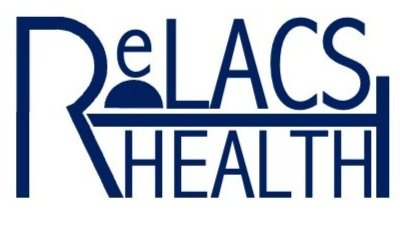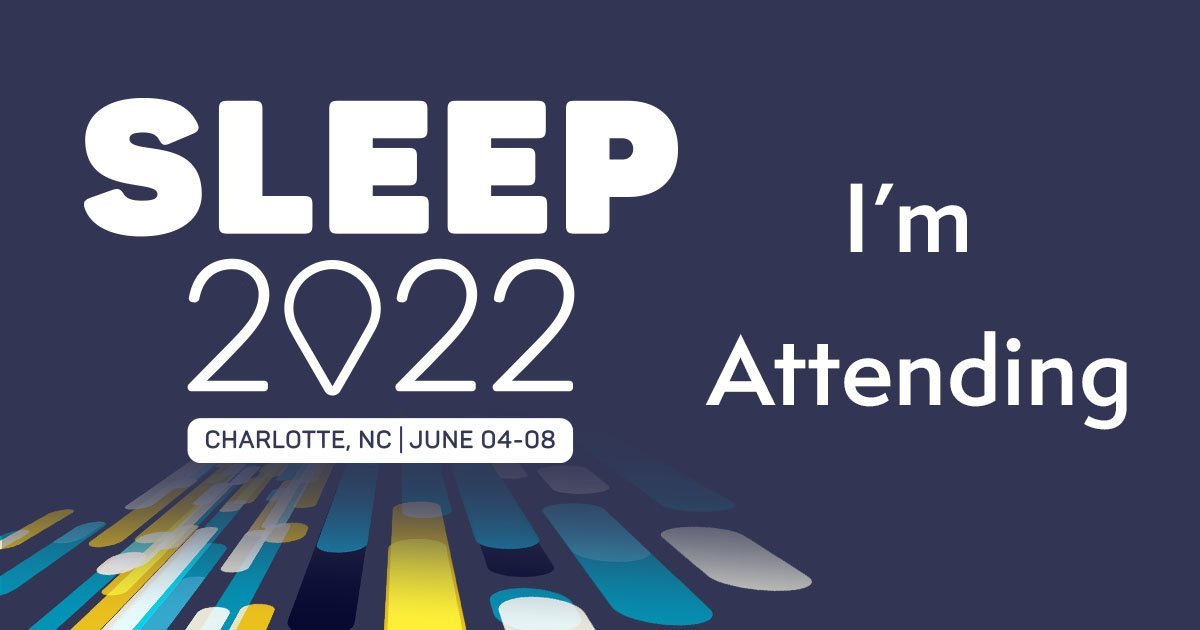A ReLACSing Blog#12: 10 Things Learned at SLEEP 2022
Without having to present, I could sit back and absorb the first in-person SLEEP conference since 2019.
ReLACS Health opened its doors to its first patients on June 2, 2022, and four days later, I decided I was long overdue for a break and skipped town. Coincidentally, the Associated Professional Sleep Societies (APSS) was hosting its annual conference in Charlotte, NC, SLEEP 2022, its first in-person annual conference since 2019 in San Antonio, giving me the perfect excuse, so this is where I headed! Here are ten things I learned this year at SLEEP 2022:
Dr. Susan Redline at Harvard gave the keynote address at the plenary session highlighting differences in how sleep apnea can lead to cardiovascular disease among numerous demographics like ethnicity and gender. For example, she wonderfully illustrated gender differences in sleep apnea. Women have a lower arousal threshold (i.e. wake up more quickly or easily from breathing difficulties), decreased collapse of the throat leading to less total obstruction, and less of a drop in oxygen from breathing episodes than men. It again highlights that some of these measures like the apnea-hypopnea index (AHI) that are used to classify sleep apnea severity are over-simplified and maybe should not be the only metric used by insurers in providing reimbursement for treatment (Medicare administrators, are you listening?... Answer: No, I opted out of Medicare and it looks like they have opted-out of reading this long-winded blog).
My former fellowship mentor Dr. Chad Ruoff at Mayo Clinic in Arizona presented a poster on concerns about the large magnets in the clips of CPAP masks interfering with pacemaker devices. They do generate a large magnetic field, so if a patient unknowingly removed their mask and it wound up on their chest near the pacemaker, it could cause some complications with the functioning of the device. This study here was one that looked at this previously. Thus, for patients with pacemaker-defibrillators, it may be best to choose a mask without magnetic fasteners.
A larger theme from observing the conference as a whole is the ongoing research on differences between patients with the “same” condition and the continuing progression of the medical system toward more personalized healthcare. I attended a series of insomnia presentations that echoed the same theme, particularly differences between those with insomnia who were “short-sleepers” or those with < 6 hours of sleep per night, and others who have insomnia with normal sleep amounts. These profiles are treated quite differently as the gold standard treatment of cognitive and behavioral therapy for insomnia (CBT-I) may not be as effective in those with shorter average sleep times. Determining who was sleeping < 6 hours was also challenging as the patient subjective report or even logging sleep hours was prone to inaccuracy and may lead to less than the optimal treatment approach. Actigraphy, which is commonly done with a wrist-worn device that can measure body movements to estimate the amount of sleep, can more accurately identify sleep amounts and patterns. For those with an Apple Watch, Oura Ring, FitBit, etc., these gadgets use actigraphy to track sleep as well, though not quite yet at a medical device grade level, but I am sure we will be there in the next few years. Actigraphy, though not particularly expensive compared to other medical tests, is largely not covered by insurance, and generally is performed as part of a larger sleep testing package to evaluate excessive daytime sleepiness (PSG-MSLT). Though actigraphy is extremely beneficial to a large subset of patients, including for insomnia, hypersomnia, and circadian rhythm disorders, most centers–even the big research ones–hardly perform it.
We are still not comfortable with living with endemic COVID in the US. Despite nearly everyone being infected and/or vaccinated for COVID-19 at this point, the APSS planning committee (or was it their lawyers?) decided to put on a good ol’ mask mandate, requiring the 90-95% to wear masks when perhaps only 1% or less would be simultaneously immunocompromised, choose to travel, and attend a large conference. This is the group that would have needed a high-quality mask to protect themselves. A major purpose of a national conference is social interaction and interpersonal communication. The masks contributed to difficulty identifying people and understanding what they were saying, a non-trivial side effect of this questionable mandate.
Back to insomnia, those with insomnia and short sleep have a host of other metabolic problems as well, including increased levels of the stress hormone cortisol, more inflammation, overactivity of the sympathetic nervous system (the fight or flight response), and increased insulin resistance. If this sounds like a recipe for cardiovascular disease, you are correct as this is the standard fare. My impression is that we cannot look at each condition individually and rather should look at the whole. Insomnia is less likely to be the singular cause of these symptoms than one aspect of the many symptoms the ride along together in association to form the whole. I find it hard to believe that just giving this type of individual a magic sleeping pill to cure the insomnia would resolve all of these processes as a result, as the whole system has gone awry, not just the sleep. This is why lifestyle and behavioral treatments within a comprehensive, holistic approach are essential to healthcare.
I went to a handful of talks on hypersomnolence/excessive daytime sleepiness. There is very good research going on, but again, the focus is so much on diagnosing “conditions” and treatment with drugs, rather than lifestyle and behavioral modification to improve sleep, which is one of the most essential and natural human biological processes. There was also too much focus on quantity of sleep more than timing of sleep (circadian rhythms) with the mixed-bag diagnosis of idiopathic hypersomnia (IH). I promise to write many a future blog on why I believe most patients with the so-called narcolepsy type 2 and IH, really just have circadian rhythm disruption that was not identified due to lack of time to see patients in clinic (see several of my previous blogs such as #8) and lack of insurance reimbursement for actigraphy (see above). A thorough discussion with a patient about their sleep pattern, habits, other behaviors, etc. would identify real causes of excessive sleepiness, not foisting “idiopathic” medical terms upon them. If a comprehensive assessment were followed by actigraphy, which can objectively and more accurately track sleep quantity and timing, most of these idiopathic misdiagnoses would be definitively ruled out. This is why ReLACS Health has an approach that is uncompromising in its thoroughness related to the details of sleep and overall health, something that cannot be done through a 15 minute visit with the patient and 24 hours of expensive sleep testing.
There were a few presentations on REM sleep behavior disorder (RBD) and the great work being done by the North American Prodromal Synucleinopathy (NAPS) Consortium. An extremely high percentage of those with RBD actually have neurological deficits that are subtle, including changes to smell and color vision, that may be only picked up with specific testing for these symptoms, which are not noticed by the patient or detected by a physician examination. RBD frequently portends the development of alpha-synucleinopathies, or disorders like Parkinson disease, so a lot of research will be going into how to prevent the progression of symptoms in these conditions over the next few decades. Diagnosis of RBD may one day become an early way to identify and intervene in these neurodegenerative disorders.
A sub-conference by the International RLS Study Group included many high level talks on RLS, most of which I will spare you as they are just too technical to be appropriate or even interesting for a blog (aka I don’t understand half of what they presented to summarize!). However, Dr. Charles Phelps presented the results of the Odyssey II survey, which included a large number of patients and spouses/partners of those with RLS. The most stunning aspect was the severity of RLS in this population and the rates of significant depression, which are inextricably linked of course. The RLS patients in the Odyssey II survey who filled out the Physician’s Health Questionnaire-9 (PHQ-9), which is a common tool used in many clinics to screen and evaluate for depression, scored in the “serious depression” range of 10 or higher at rate of 37% with an average PHQ-9 score of around 8.5, where as the general population of the US is about 2.5. The average International RLS Severity score was 21, in the severe range, and not coincidentally, about 60% were on dopamine agonists. Read why dopamine agonists are BAD for RLS. Again, it should be noted that those who would fill out a lengthy set of questionnaires on RLS are more likely to be ones with more severe cases so there is a selection bias in this study. Regardless, this points to the need to eliminate the use of dopamine agonists with rare exception and appropriately address mental health and depression in those suffering with this condition.
The RLS Foundation Scientific and Medical Advisory Board enjoying a beautiful evening amidst the Charlotte skyline.
9. My fellow University of Detroit Jesuit High School alumnus, Dr. David Rye presented some very interesting research on African American women with RLS. RLS has a lot of genetic components linked to genes from the northern and western European parts of the world, so this is obviously less common of a condition in those with African, Asian, etc. genetic lineage. However, the vast majority of subjects identified in this study had not been diagnosed with RLS, yet were living with significant symptoms. Iron deficiency anemia was exceedingly common, and many African American women with RLS in this study could have obtained relief of symptoms through iron supplements or iron infusion through an IV, which are first line treatments for this condition beyond lifestyle and behavioral modifications.
10. Lastly, though there are so many topics to talk about that I’ll save for future ReLACSing blogs, I will end with the harmful metabolic effects of sleep irregularity. The consistent theme was that inconsistent sleep is bad for metabolic health. Stable circadian rhythms are important! Variability in sleep (and eating) patterns is associated with many things including increased LDL cholesterol levels, blood pressure, consumption of junk food, weight gain, and visceral fat accumulation (the “really bad” fat) in adolescents. This is again why I stressed the importance of sleep timing in Blog#7.
Overall, it was a fantastic event (masks and all), and I am looking forward to Indianapolis in 2023. It was great to go to another in-person conference after presenting at the American Academy of Neurology in April, following 2+ years of virtual conferences. Though ReLACS Health is 100% telemedicine, and I am obviously a big supporter of these technologies, academic conferences should largely be in-person (and mask-optional).
- Andy Berkowski, MD, not delivering this blog to you through US mail or telegram (and, yes, I know what a telegram is, I see that sarcasm, I can still see your facial expression around that mask!)


